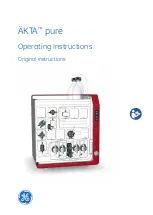
9
machine off wind and. when the blades stop, throw a rope
over them and tie down.
Never throw a rope into the turning blades.
CAUTION
To avoid personal injury wear sturdy gloves as a
precaution. The wind turbine blades are capable of
causing GRAVE PERSONAL INJURY and should be
treated with the same respect as an aircraft propeller.
PERFORMANCE
The graph shows the output for a range of wind speeds.
The drag due to the wind turbine is about 22kg (50lbs) at
50 knots wind speed.
SMOOTH RUNNING
The design of the blades makes the Pacific a very quiet
running machine. If vibration is encountered, this is
evidence that the turbine is running out of balance.
To prevent any resultant noise and the risk of fixings
working loose, it is most important to take action. Remove
the turbine, take out the blades and examine them to check
that the pairs are placed opposite.
If they are correctly assembled, contact Ampair .
To confirm correct blade performance, firstly weigh the
blades, the pairs should be the same weight, within one
FINAL ASSEMBLY
a) Mounting the Pacific:
Put a thin film of grease on the
pivot shaft and its fixing screw threads to prevent
corrosion. Bring the Pacific body to the mounting
arrangement, pass the 2 core cable down the mounting
pole, insert the pivot shaft of the Pacific into the top and
secure the fasteners.
The top of the pole is made to compress the lower pivot
bearing "V" seal by about 2mm, if you have made your
own fixing tube, be aware of this point to ensure free
turning and weather proof sealing.
b) Output Cable:
Make the final electrical connections to
the battery, as shown in the electrical section, Insert the
fuse or fuses in their carriers.
CAUTION: Fit the tail vane first.
If you fit the wind turbine first, the machine will turn
out of control and be a danger to approach.
c) Tail Vane:
Clamp the tail vane using the M8 x 25
screws washers and lock nuts.
d) Wind turbine:
Assemble the blades to the hub with
the concave or hollow side facing the wind.
Using the M8 x 45 square shoulder fasteners, shakeproof
washers and nuts, fix the blades in place observing the
colour-coded pairs. These must go opposite each other.
FAILURE TO OBSERVE THIS POINT CAN CAUSE
THE MACHINE TO RUN OUT OF BALANCE.
The holes in the blades are deliberately a tight fit and it
may be necessary to turn the fasteners as they are inserted.
First, evenly tighten all the nuts by hand, then, fully
tighten opposite pairs with a spanner.
Finally, recheck the tightness of all the nuts.
Note.
Put a rope over the Pacific passing through the
blades to prevent its turning as you carry out the final
checks.
Once the mounting is complete, make sure all personnel
are clear, turn the Pacific to face the wind and whilst
holding the vane step back and remove the rope.
Check all fixings at regular intervals, especially after
severe winds.
OPERATION & PERFORMANCE
STARTING AND STOPPING
a) Starting up.
It is assumed that the Pacific has been
assembled and installed in accordance with the
INSTALLATION Section.
b) Stopping.
The wind turbine has been designed to
survive storms, however, it is a good plan to stop the
machine if a hurricane is expected or to carry out
inspection. To do this, proceed with caution, approach the
Pacific from downwind and grasp the tail vane
(use a boathook for marine generators). Carefully turn the
Fig 7
Summary of Contents for Pacific 100
Page 10: ...10 Fig 8 ...
































